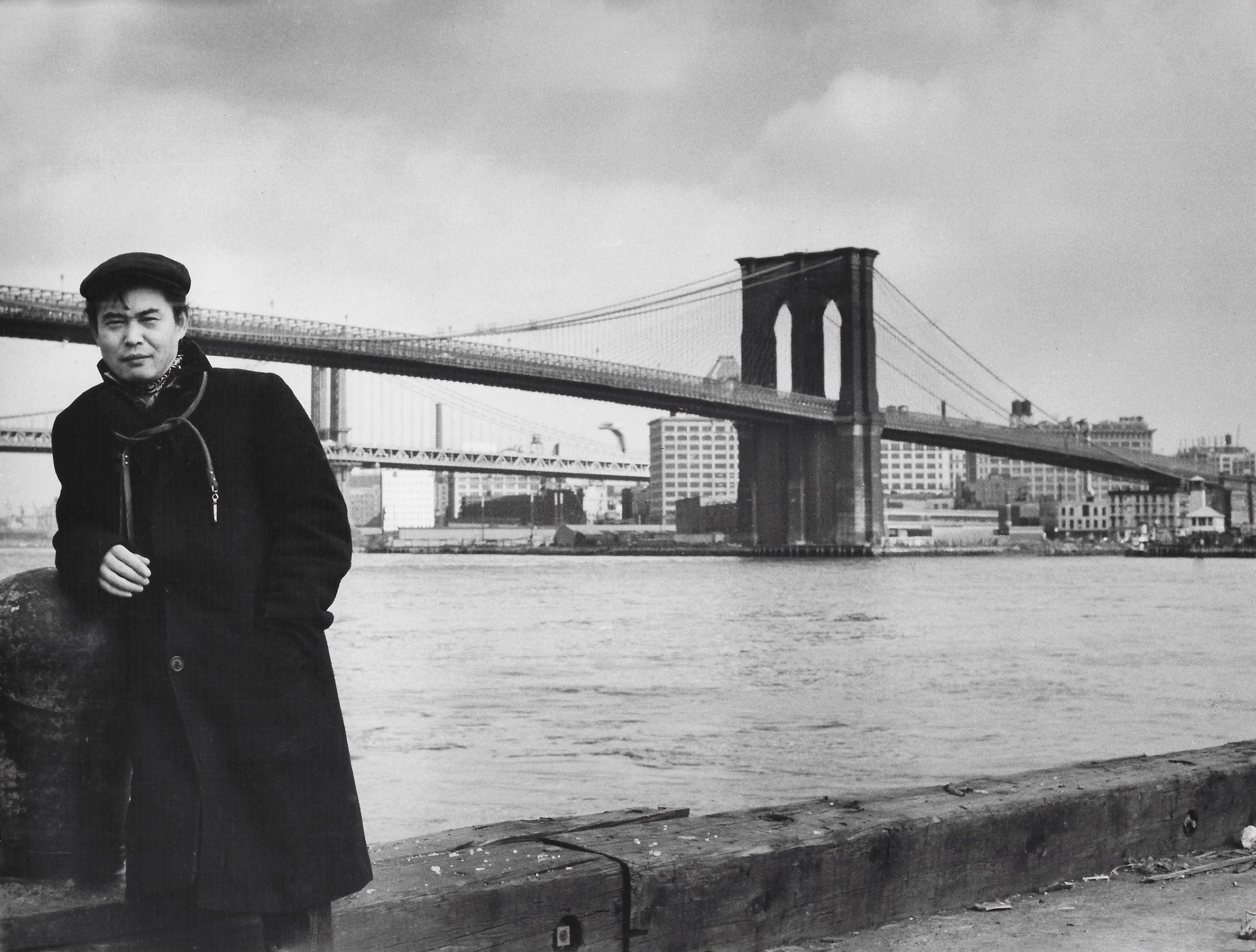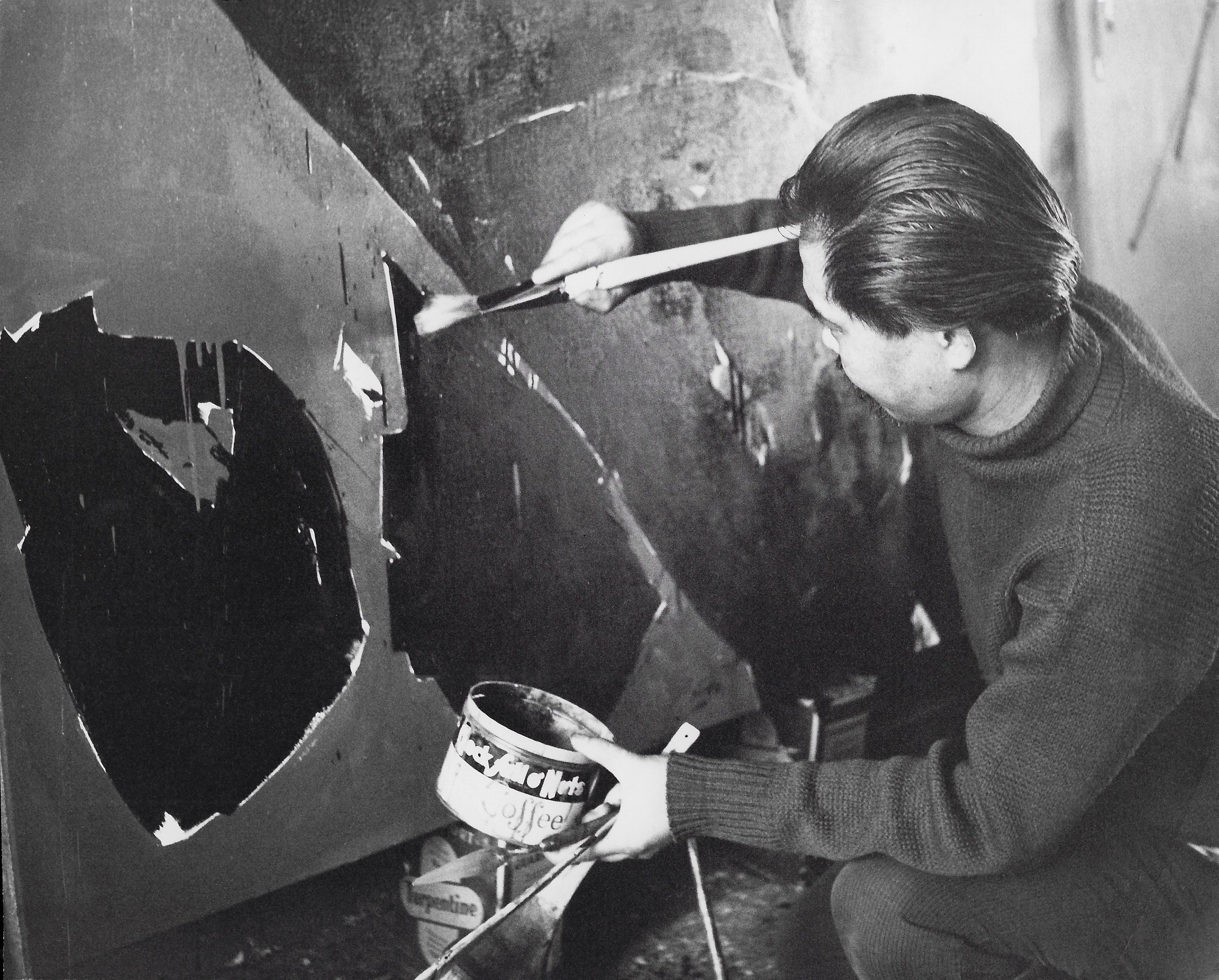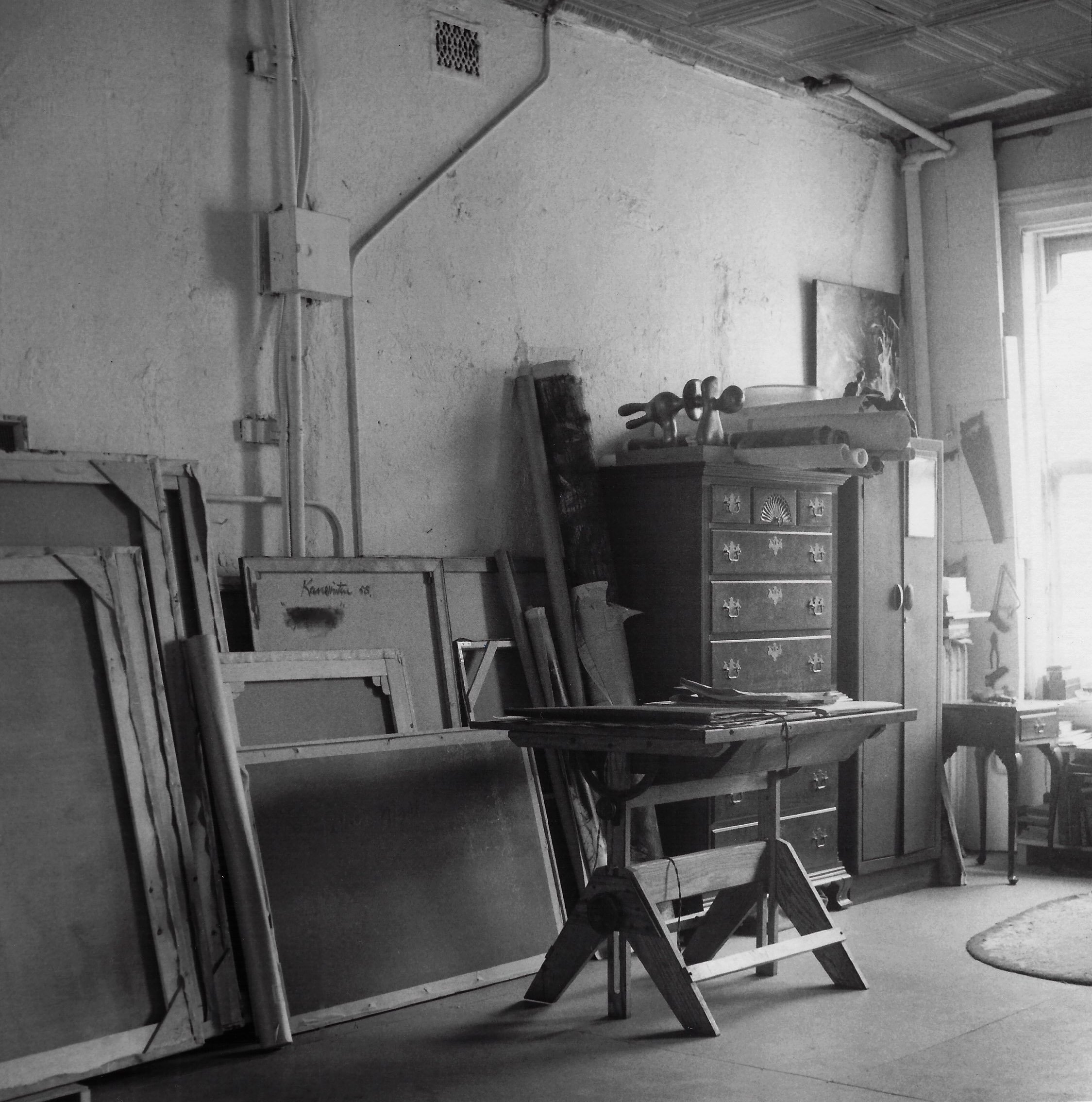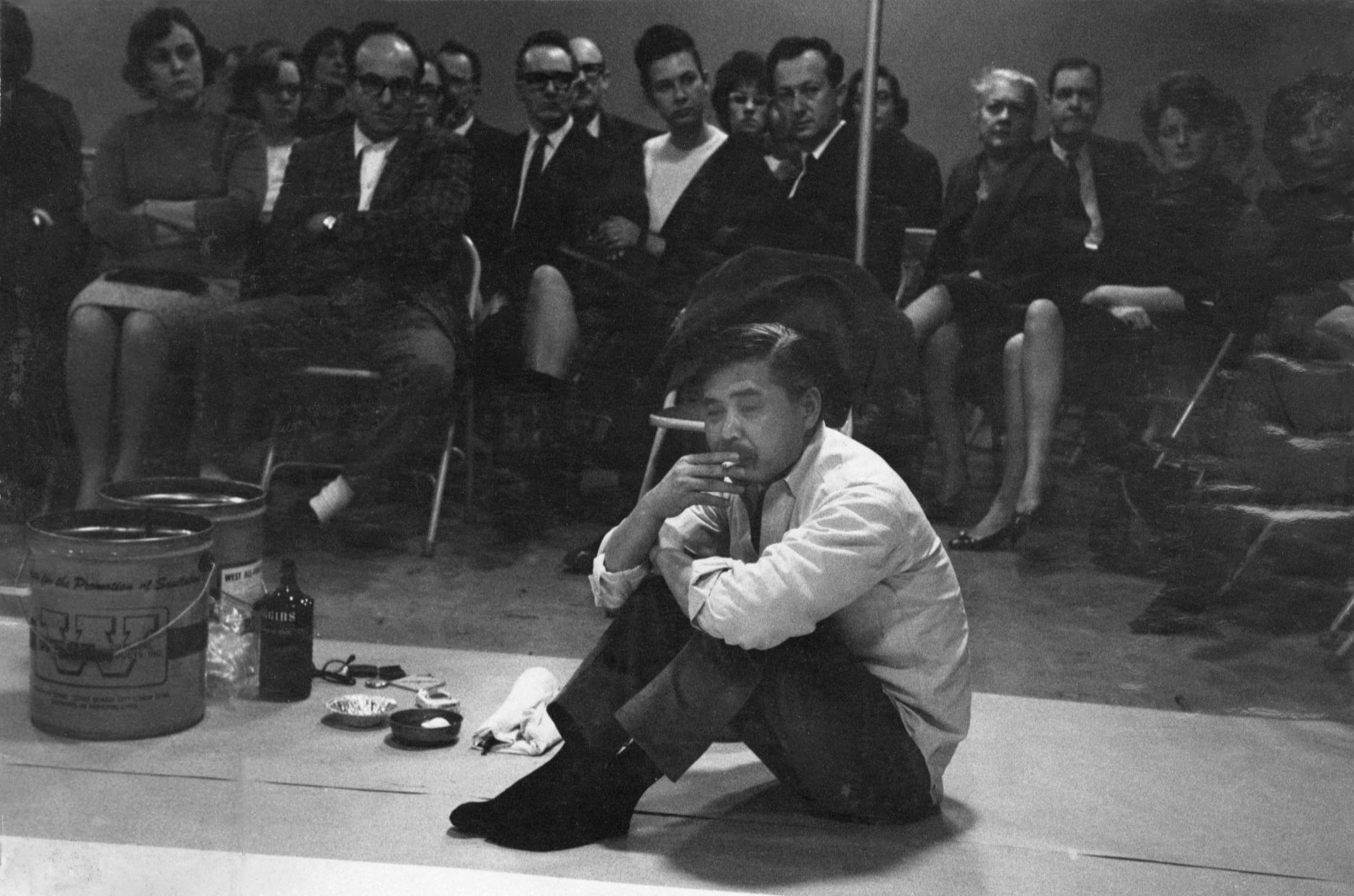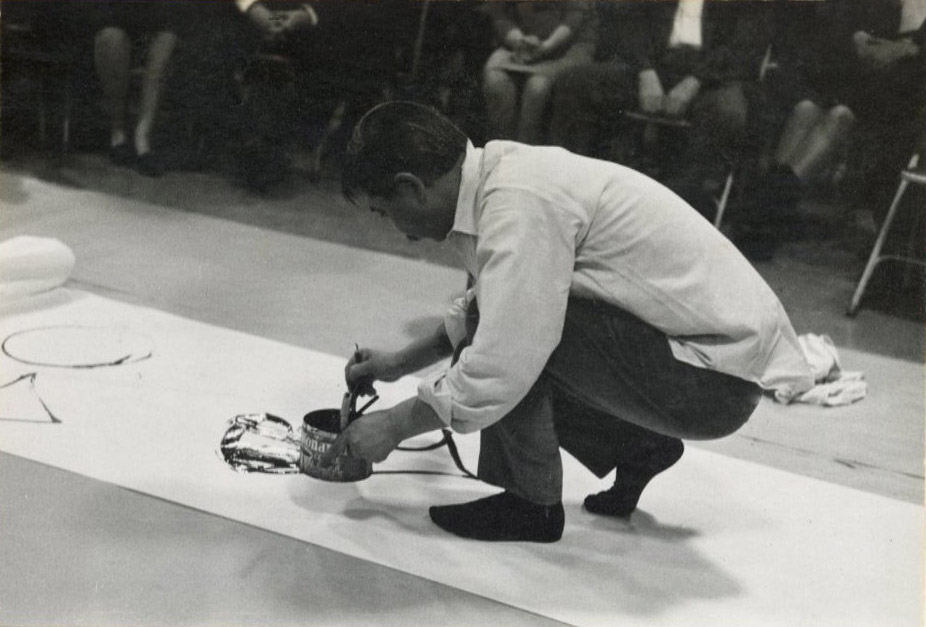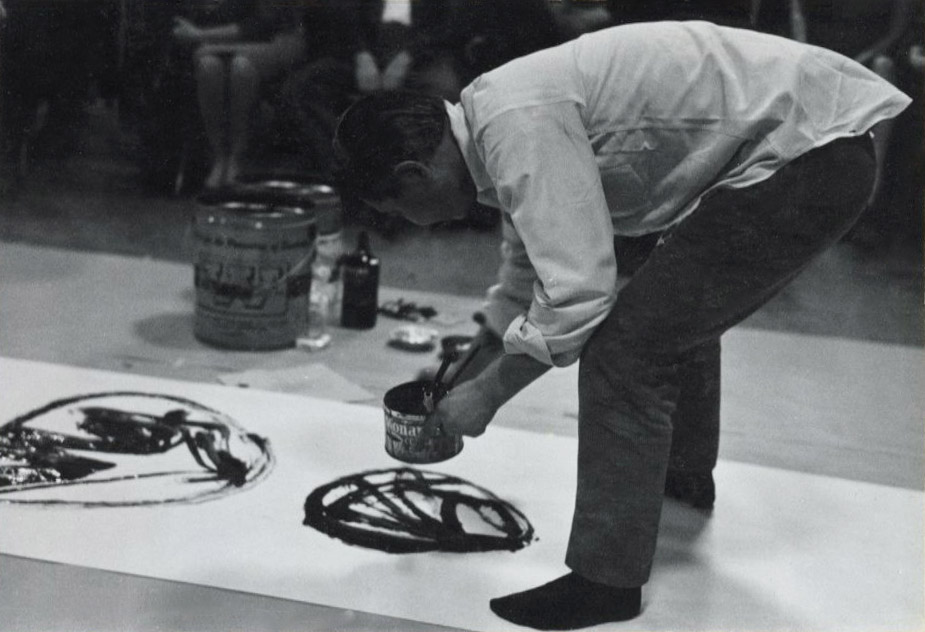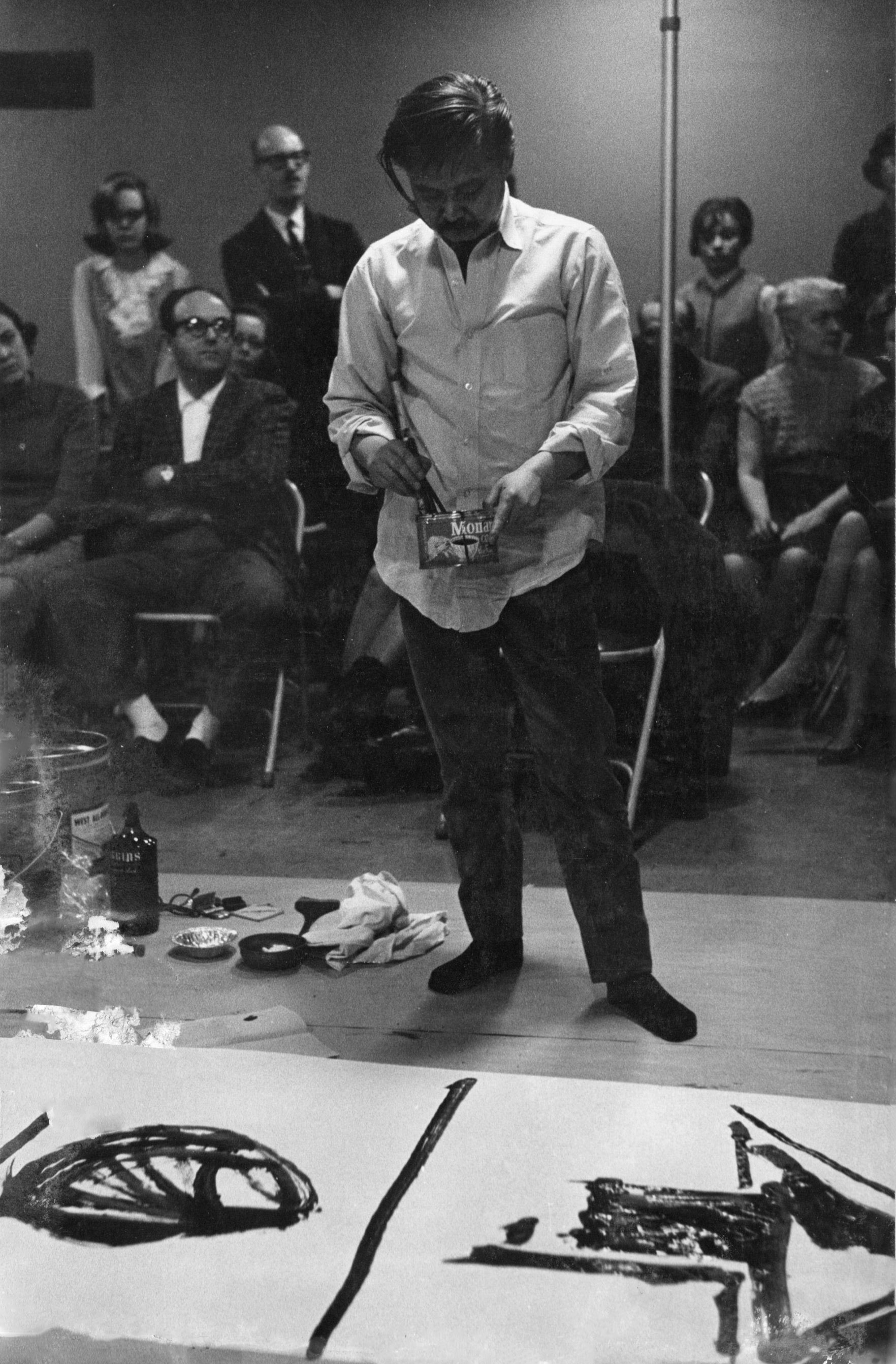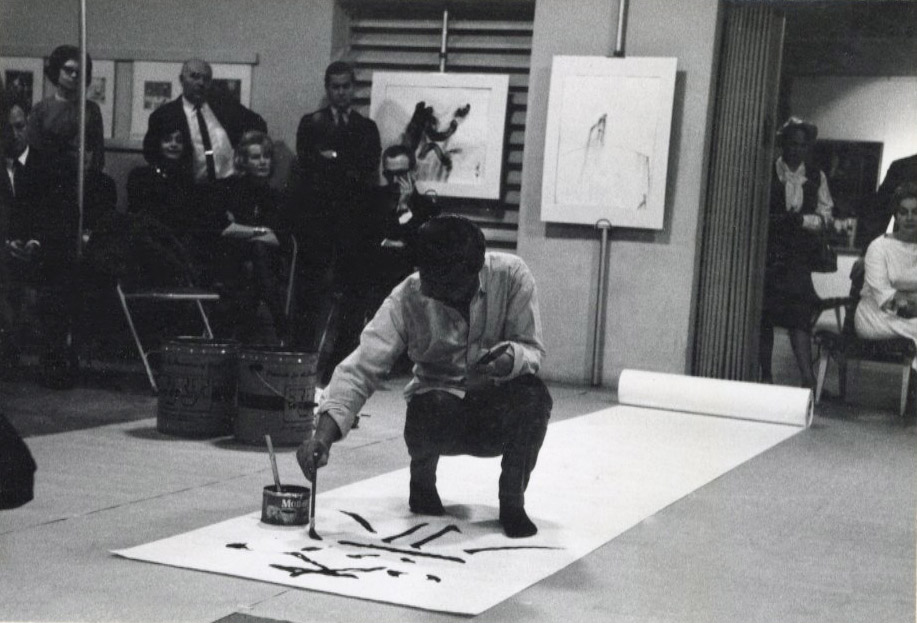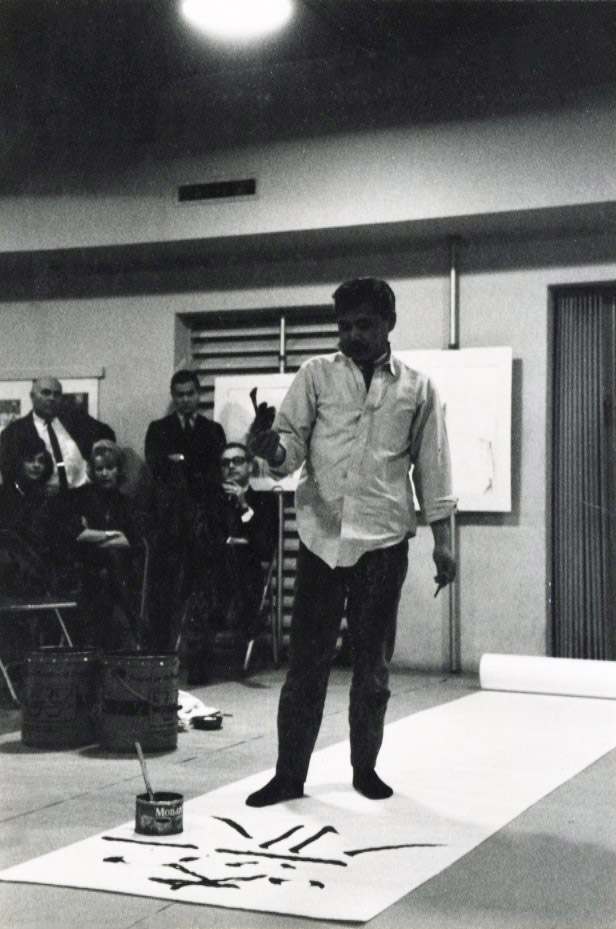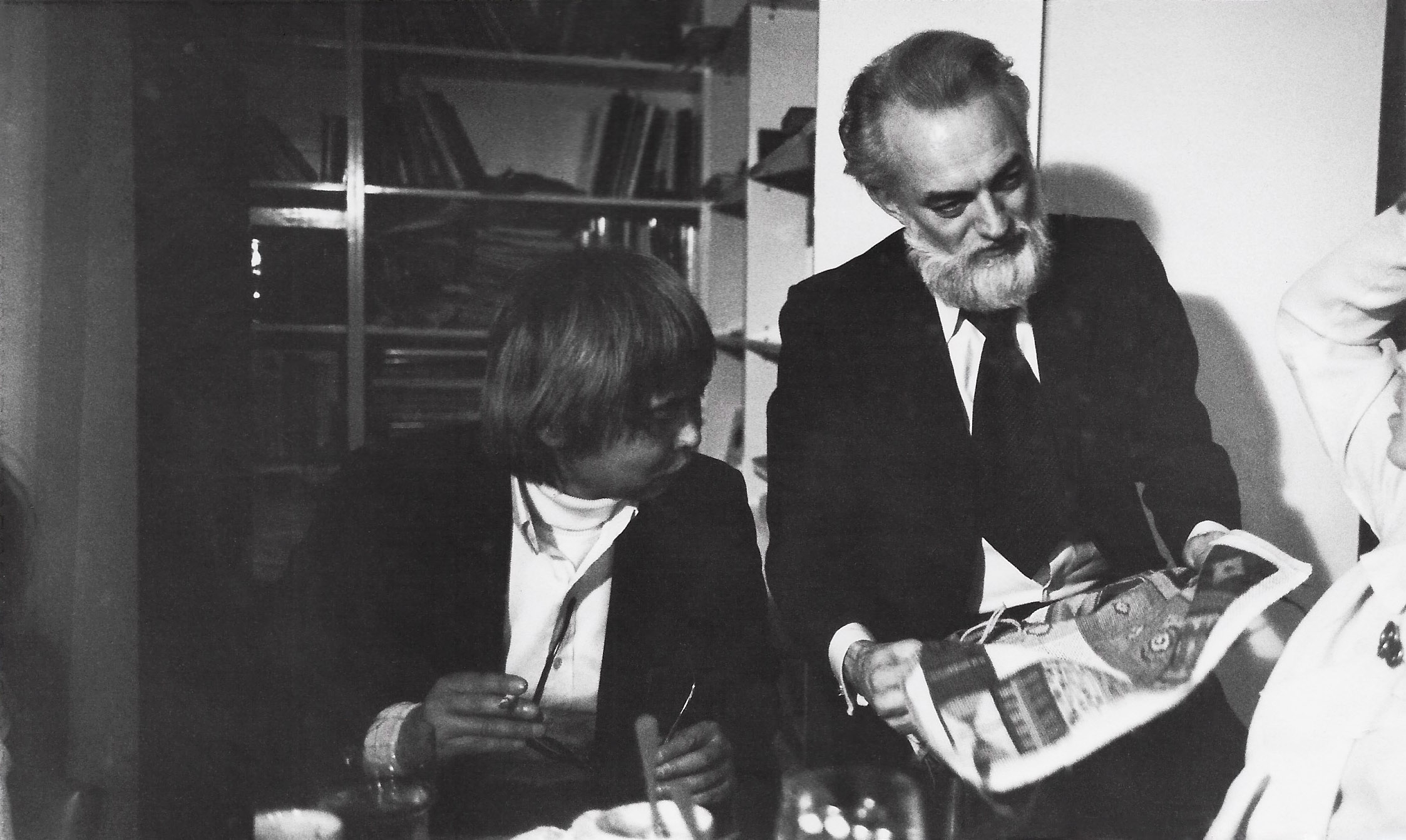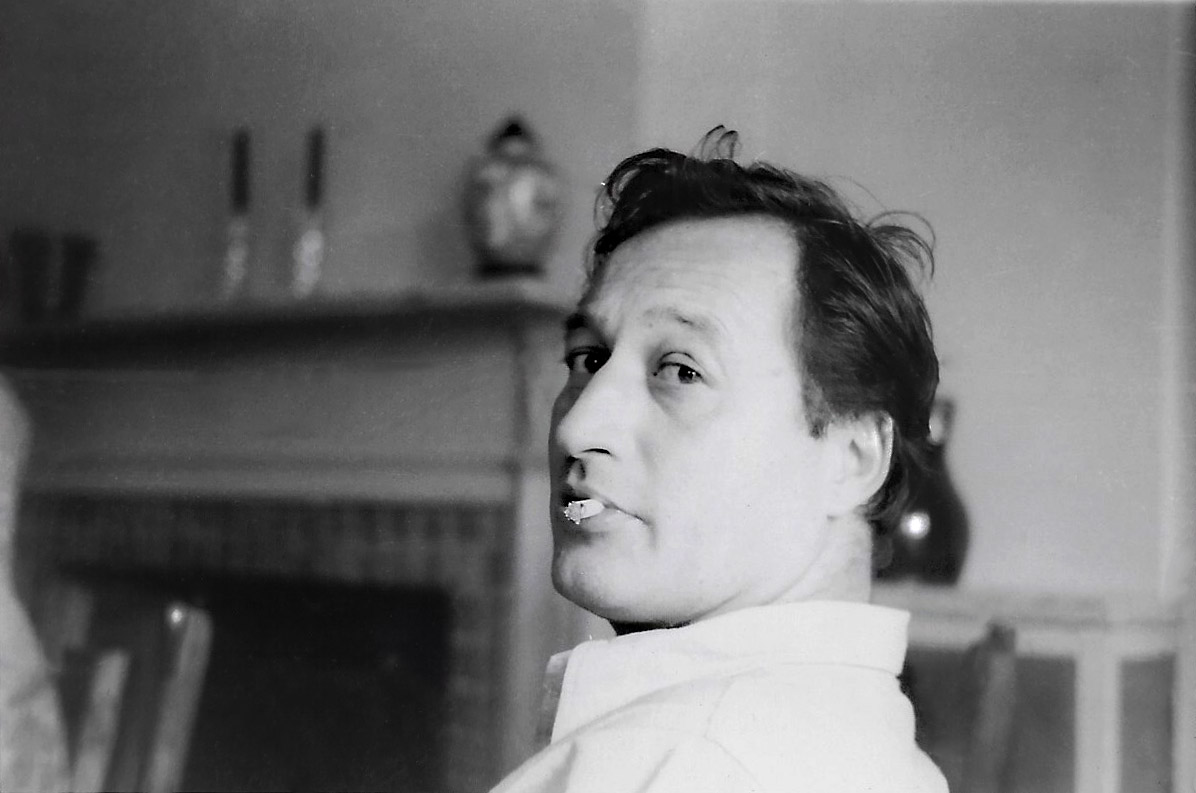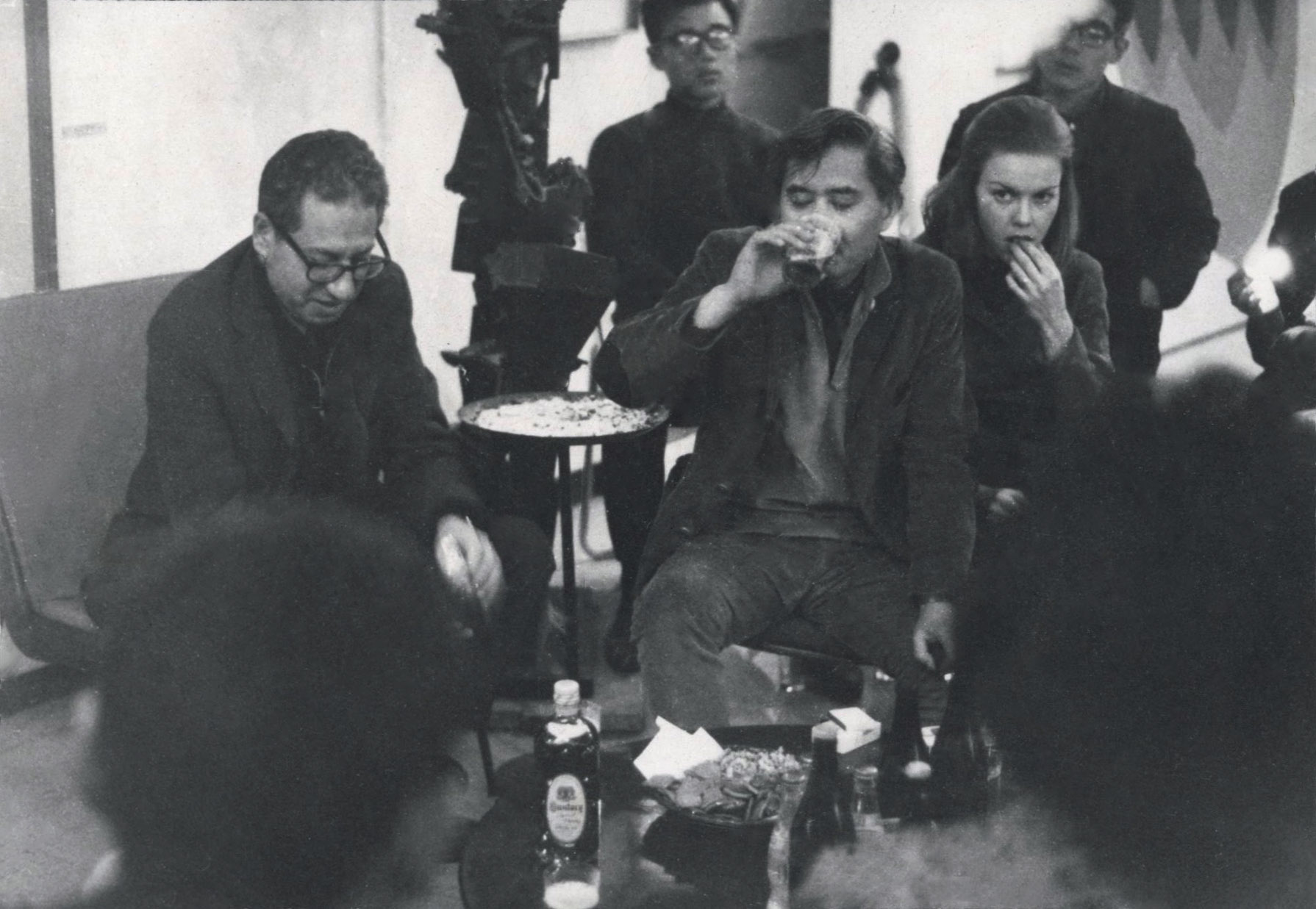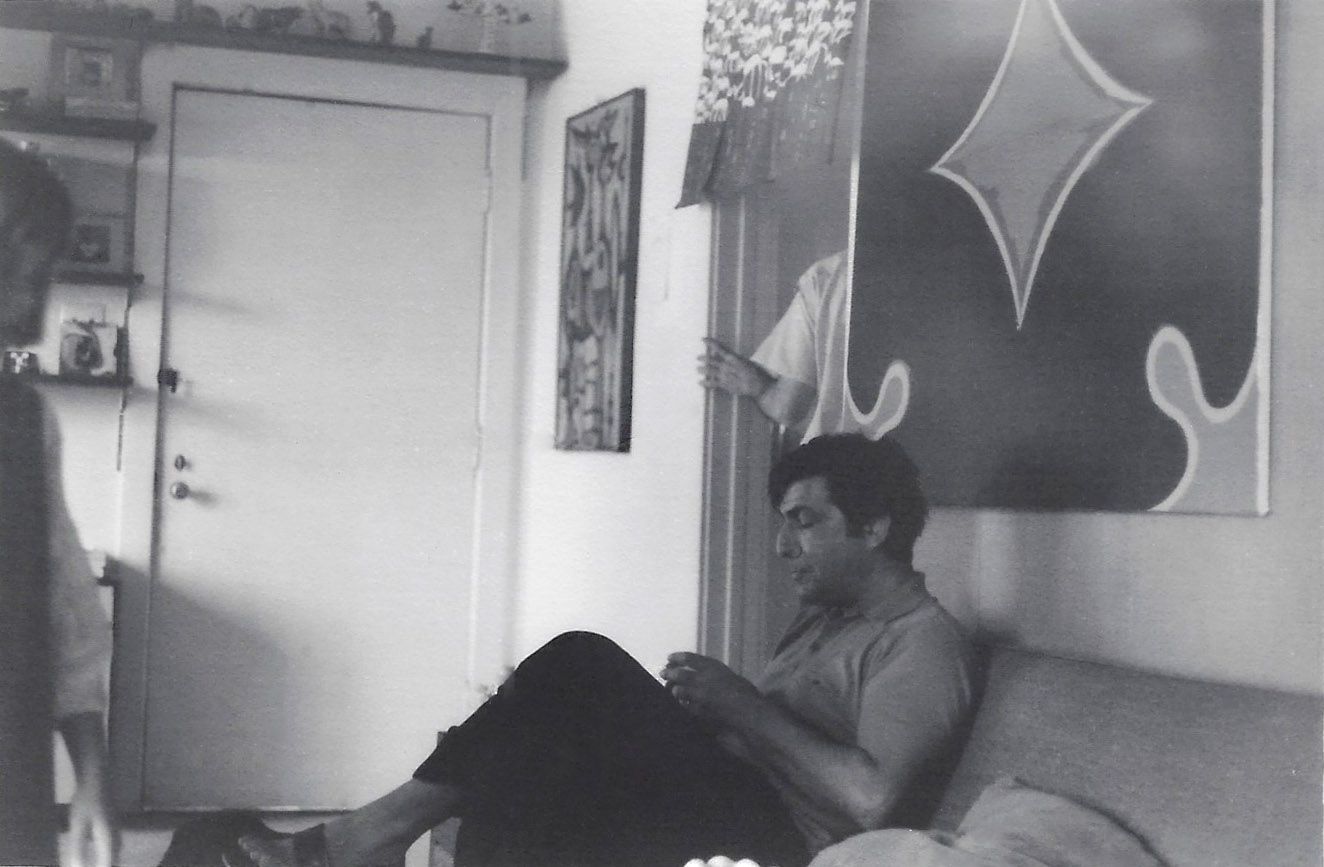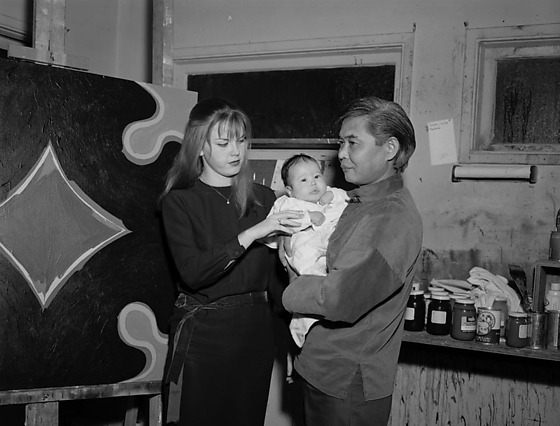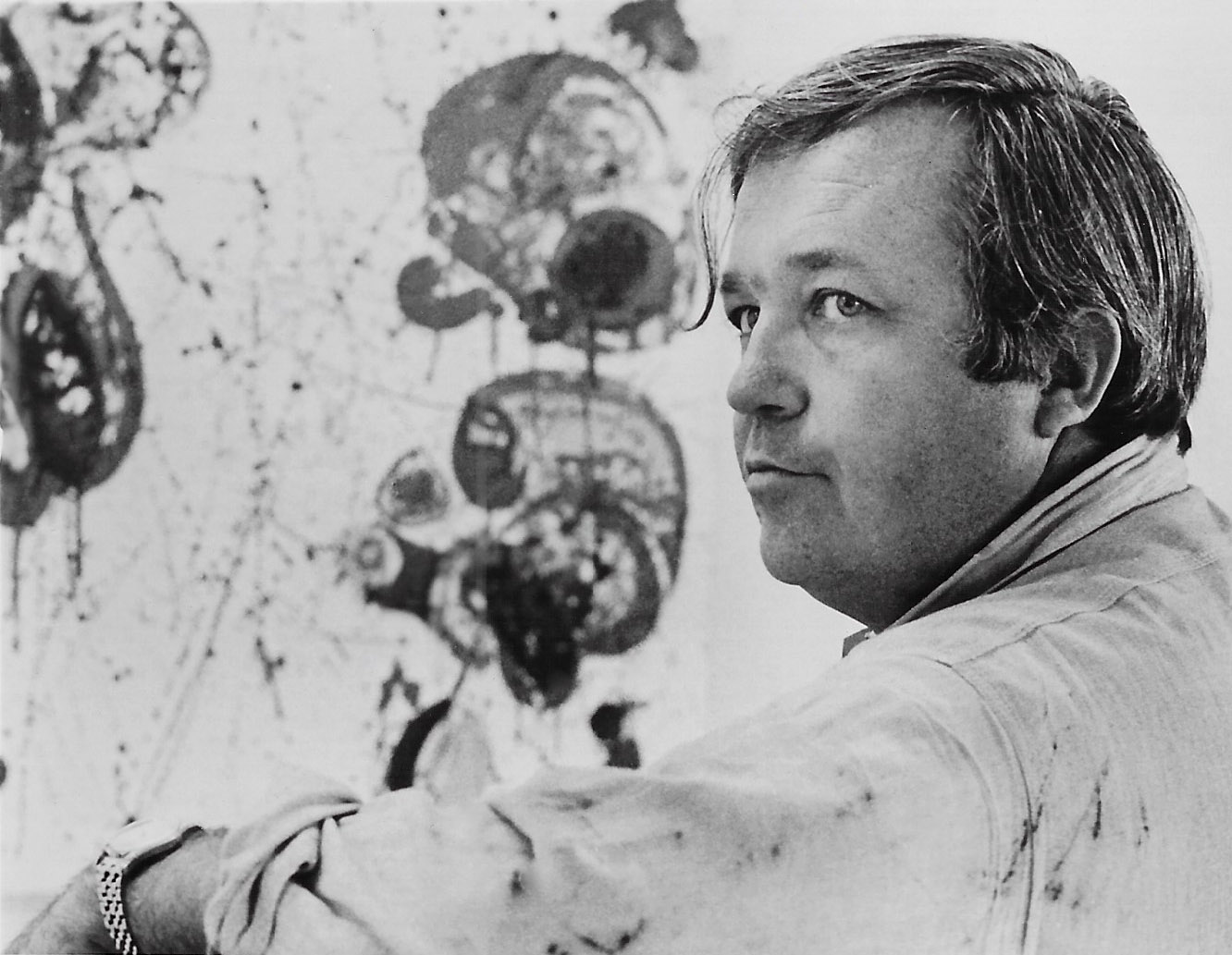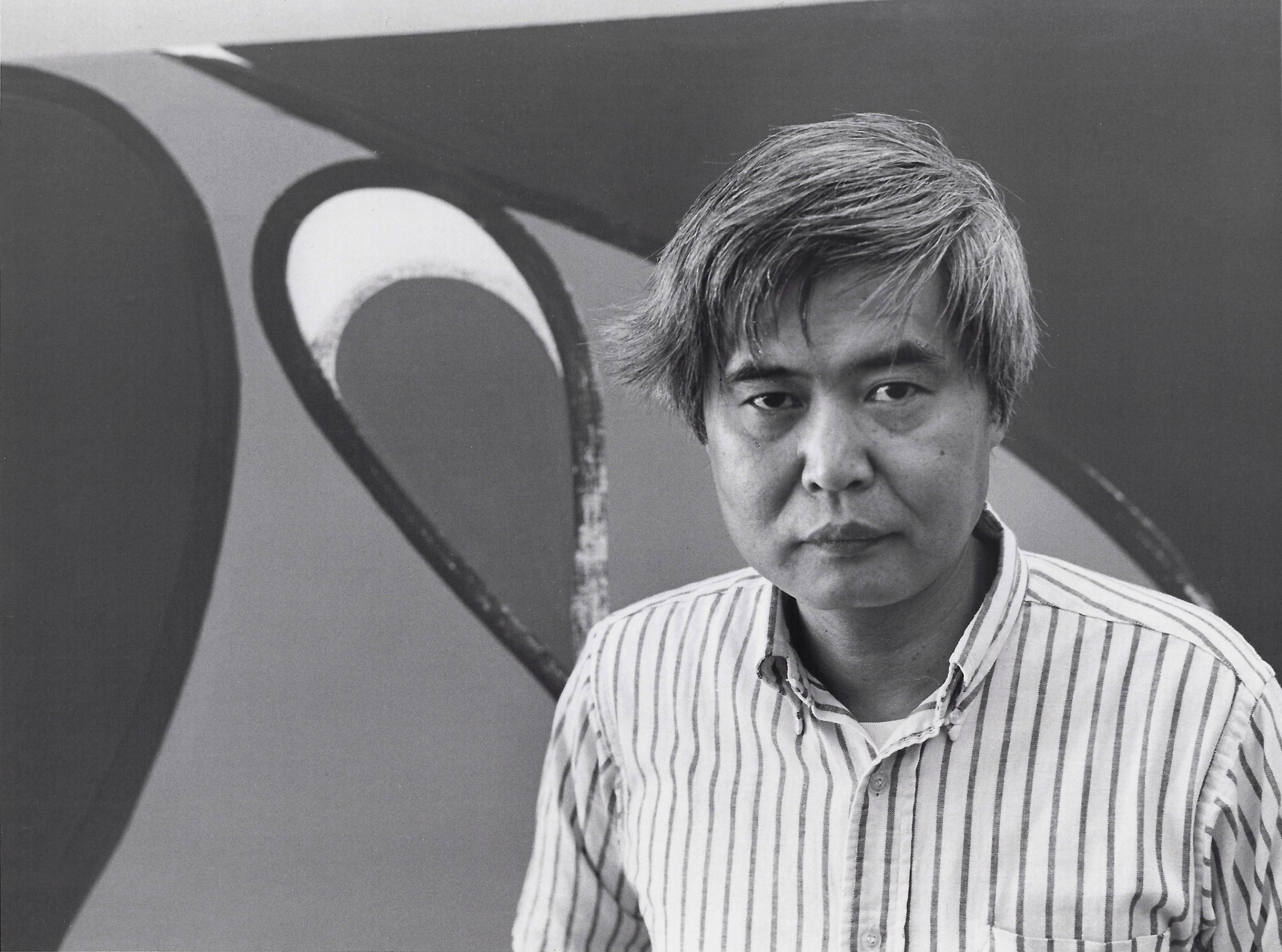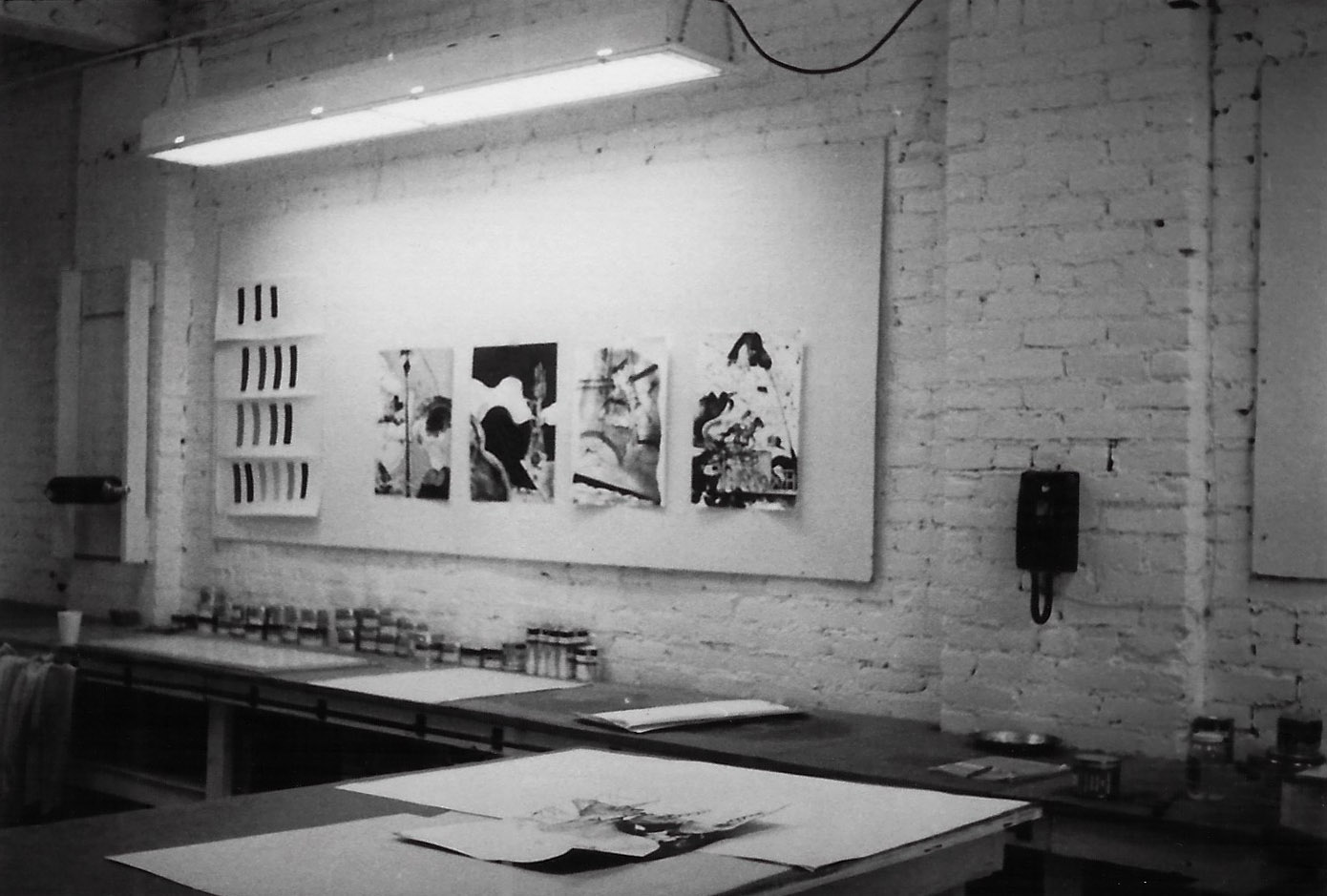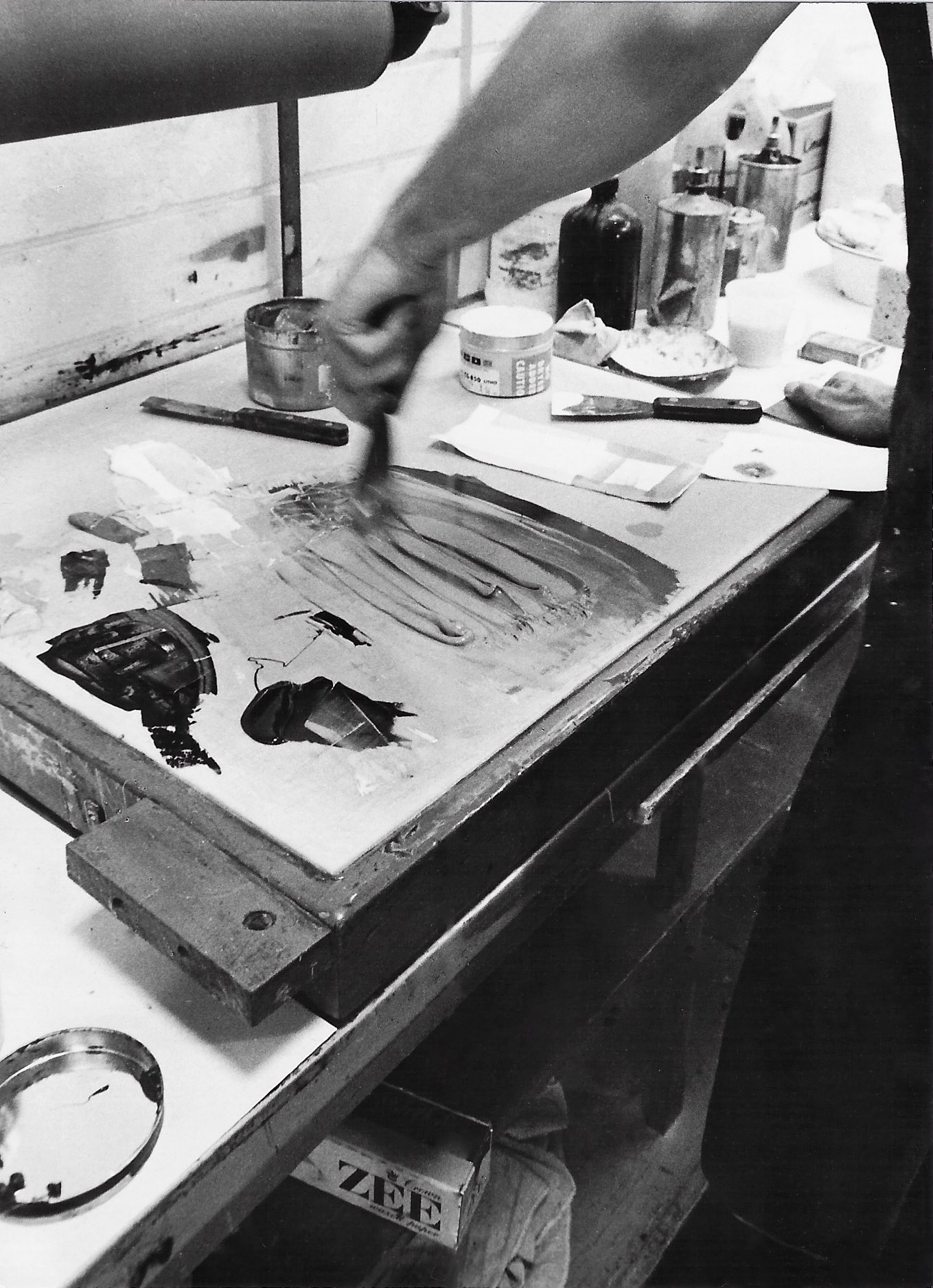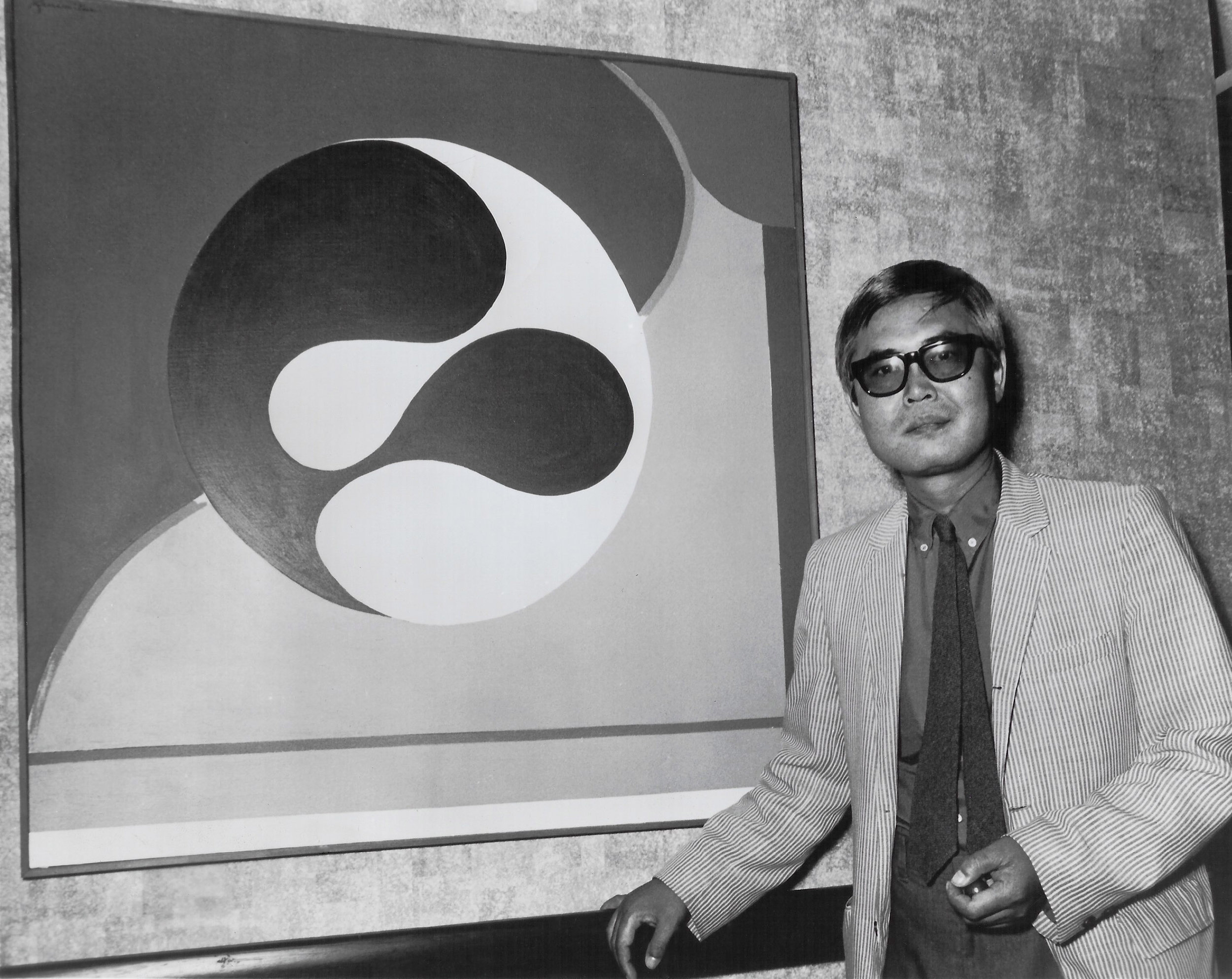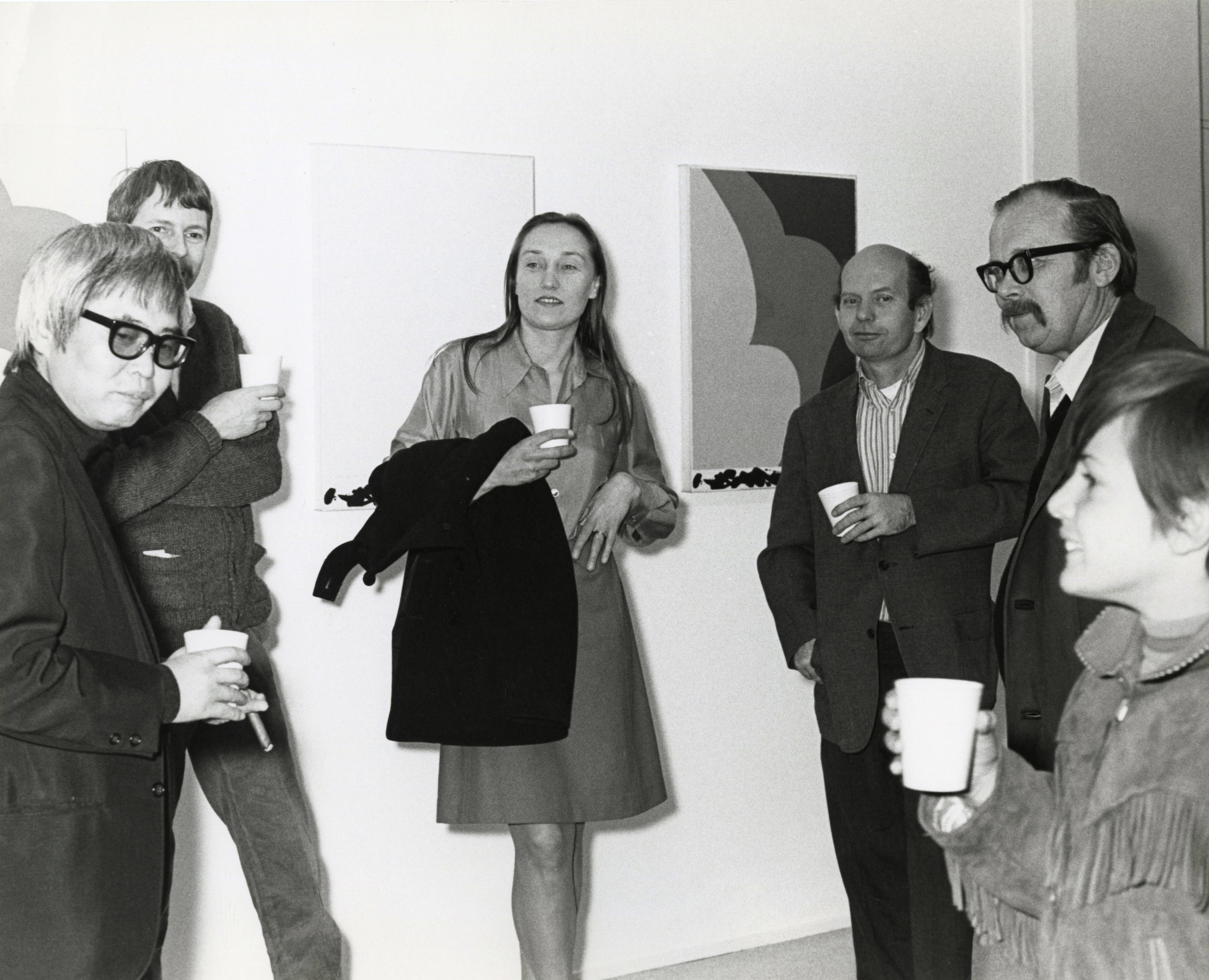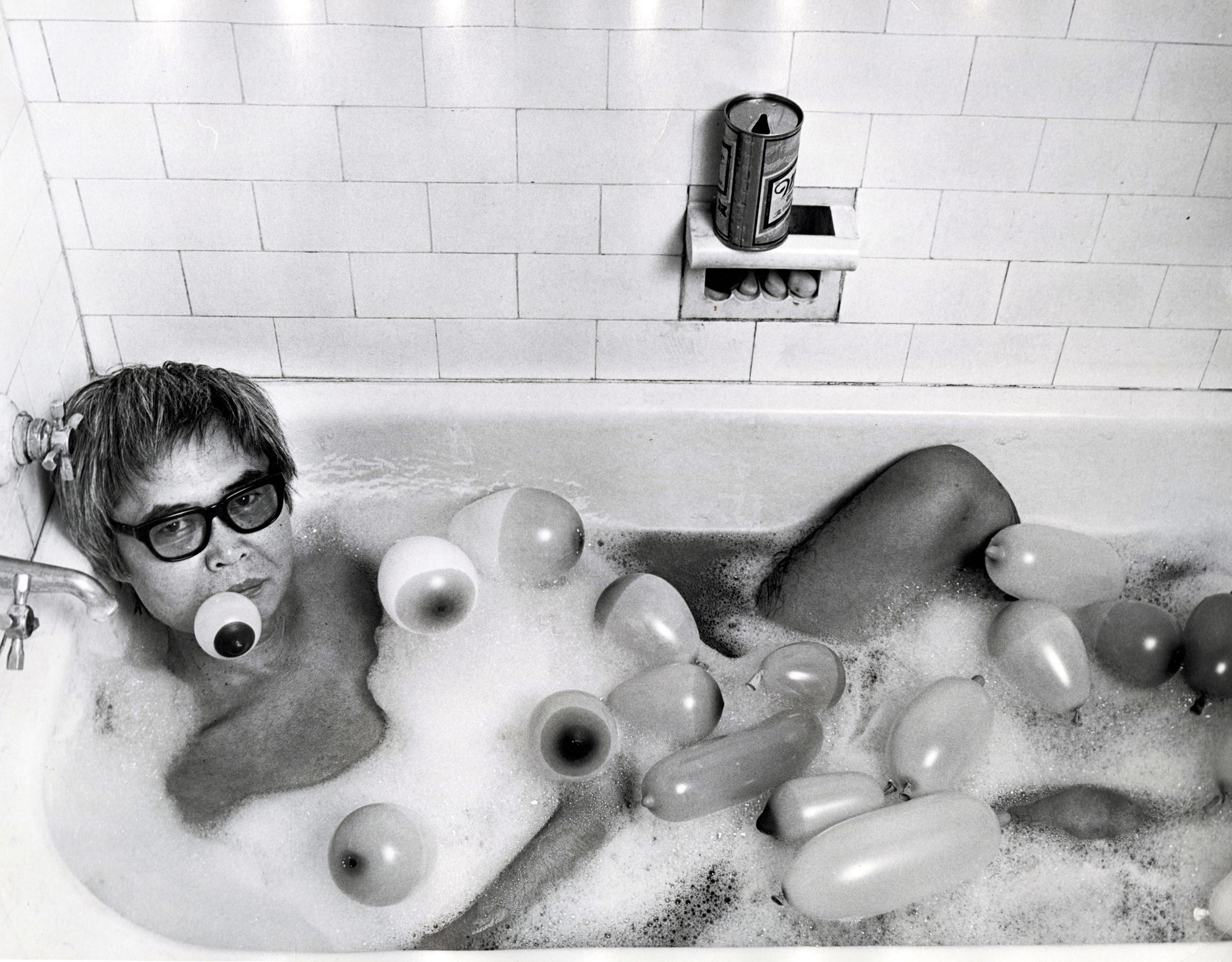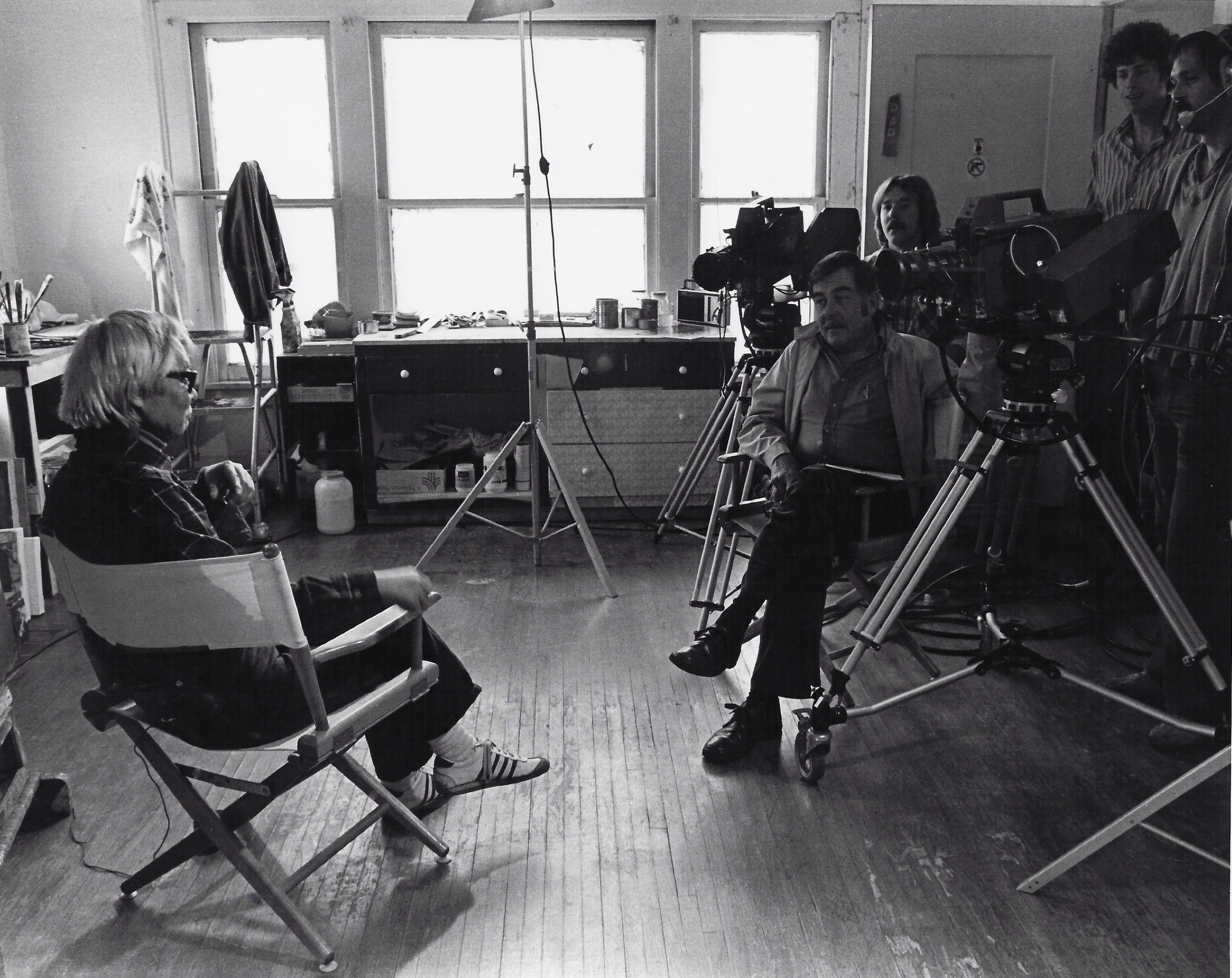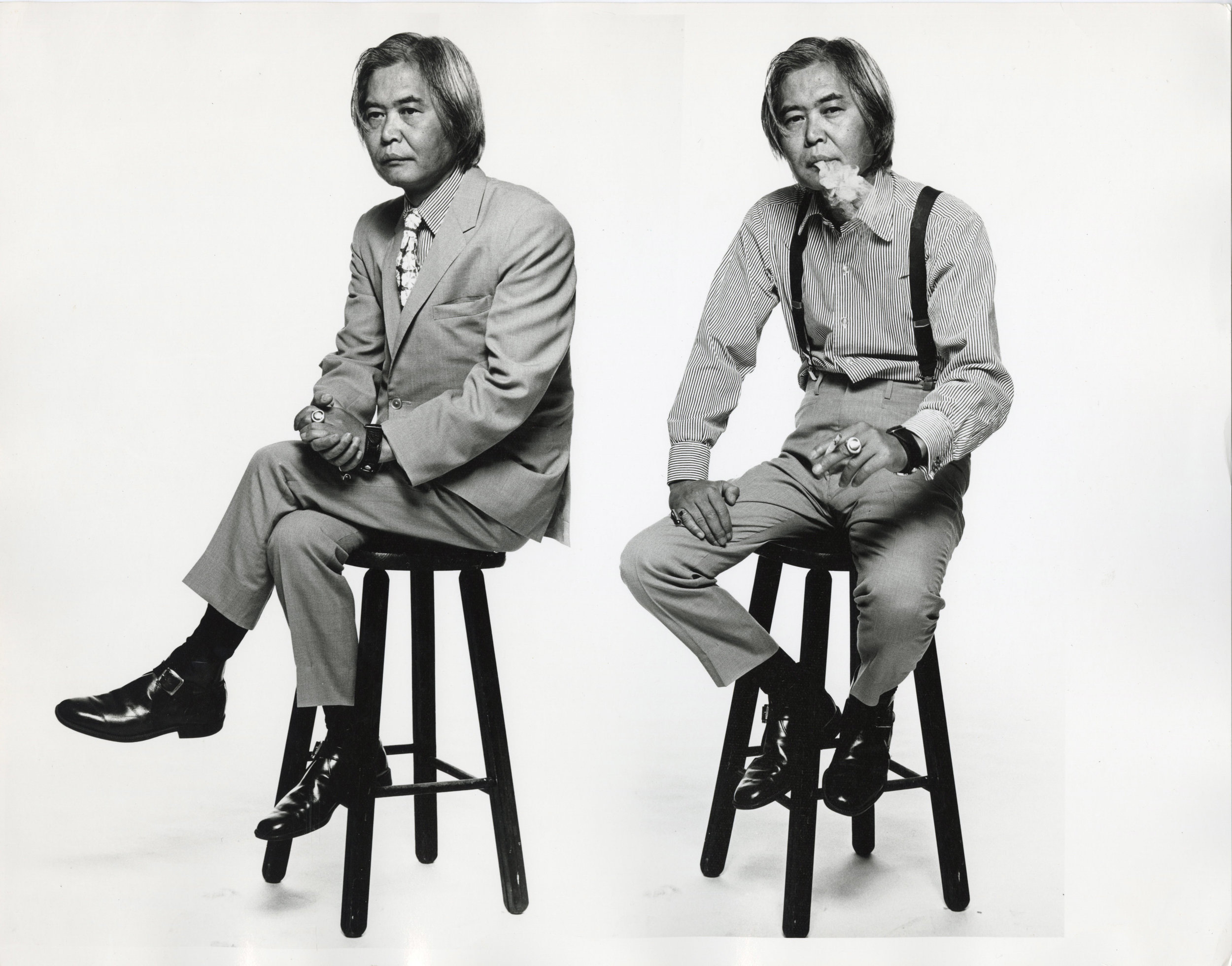CHRONOLOGY
Early Years
1922
Born May 28 in Ogden, Utah. His parents run a hotel and barber shop that caters to Union Pacific railroad and foundry workers.
1925-6
At age 3, moves to his grandparents’ house in a suburb of Hiroshima City, Japan for his health. He meets his parents at 11 years old when they come to visit with his brother. He learns drawing from a neighbor, Nobuo Komatsu, who is 10 years older than him. He draws and paints in school.
1937-8
His family moves to Japan when he is 15 years old. They all live with his grandparents. Drops out of school in Japan due to its militaristic atmosphere, returns to United States. He first arrives in San Francisco, where he is sponsored by an Ogden neighbor, Mr. Goldman, who runs a grocery store. Once in Ogden, he moves in with a Japanese dentist and his family.
1939
After spending 6 months in Ogden City, he moves to Ruth, Nevada to work in a copper mine as a waterboy. He also builds fires for the miners. He is 16 at the time.
1940
Goes back to Japan and finishes school. The Japanese army tries to draft him, so he goes back to the United States.
1941
He comes back to Ruth, Nevada and is drafted by the American army. (According to the National WWII Museum, “on September 16, 1940, the United States instituted the Selective Training and Service Act of 1940, which required all men between the ages of 21 and 45 to register for the draft. This was the first peacetime draft in United States' history. Those who were selected from the draft lottery were required to serve at least one year in the armed forces.”)
He chooses to volunteer to get better placement in the Army. He goes to Camp Robert, California, for three months of basic training. He is sent to Presidio, San Francisco “to another infantry.” He is then sent to Fort Lewis in Washington State and initially draws for the camp newspaper, signs, illustration, etc.
When war with Japan is declared, he is interrogated and stripped of his guns on December 10, 1941. He is confined to the barracks for two weeks. Because he is Japanese, they “just don’t know what to do with [me], and they wait for the orders.”
He is sent to Camp Cooke in Lompoc, California. He works on engineering and draftsman projects with the engineering corps.
1942
Is “evacuated” from Camp Cooke and sent to Fort Leavenworth for a “week,” according to one source. He is then sent to Fort Riley, Kansas, which houses 600 Japanese Americans as well as German and Italian prisoners of war. He is segregated for six months in the barracks with people the army deems suspicious. He later works in the service club washing dishes.
Kanemitsu befriends Virginia Hennessey, the librarian, who gives him his first show at the service club and convinces the camp commander to give him his own barrack to paint in. He meets Jackie Robinson, who is being trained in a segregated cavalry unit.
1943-1946
When President Roosevelt visits Fort Riley on Easter Sunday 1943, he and the other Japanese Americans on the base are locked up and prevented from seeing him speak.
He is later sent to Fort Robinson, Nebraska where the canine corps are trained. He is a bartender in the officer’s club at night and paints during the day. He is there for about eight months and earns the rank Private First Class.
During the weekends, he goes to Colorado Springs to visit a girlfriend and study art and illustration from Boardman Robinson. He is sick of being treated like a “butler” to the officers’ wives at Fort Robinson and is denied transfers, so he volunteers to go overseas.
He is then sent to Camp Ellis in Illinois, near Peoria, to train for the Army/Air Corps/Medical Corps. He also teaches self-defense (karate and judo), which he learned in Japan. He is also working at Camp Ellis as a medical illustrator and taking a course to learn how to do it. He meets Alfonso Ossorio, who is also an illustrator at Camp Ellis. He works in Pekin, Illinois for extra money where he spray-paints tanks and trucks. He stays in Peoria and visits Chicago, Quincy, and Springfield.
Before he goes to England, he goes to Camp Kilmer in Edison, New Jersey for a month. He meets Jackson Pollock while in New York, visiting his show at Betty Parsons.
His first overseas deployment is to Chester, England with the medical corps. Then he goes to London and visits the museums and is affiliated with the Red Cross. He meets Henry Moore and Francis Bacon through the Red Cross. He does some carving of soap, but it is rationed so he stops.
He is sent to Le Havre, France, and then to Paris and Dijon. He is then sent to various cities in Germany, including Freiburg. He works as a sign painter for the troops. He is sent to Augsburg and then taken to Marseilles, where troops are being shipped to the Pacific theater. He is not chosen and is sent to Paris as a member of “Special Services”, where he meets Howard Katzander, who sends him to meet Picasso and Picasso’s interpreter. He is sent from Paris to Nice. He works at the Hotel Negresco and is put in charge of their liquor supply. He meets Matisse. He is sent to Grasse for 8 months.
1946-48
Discharged from the army in 1946.
According to the Baltimore Sun, he marries Mildred Hunt, his first wife, in 1946.
He stays in Europe through 1948 in Paris and Amsterdam. He meets Michel Tapies in 1948. He gets 75.00 a month from the GI Bill. He lives near Paul Jenkins’ and Dick Wray’s studios. He meets Gabriel Cohen, also on the GI Bill, and they live in a shared room in a hotel in Paris. He goes to Leger’s studio and mostly learns from his assistant rather than Leger himself, who comes by once a week for critique. He travels around Europe. He meets George Sugarman. He goes to see art in Amsterdam and the countryside. He makes work that he ultimately destroys while in Paris. He also meets Michel LeGrande, Giacometti, and Zadkine. He visits Italy and Spain.
1949
Group show: Baltimore Museum of Art.
1949-50
Goes to Baltimore. He studies sculpture with Karl Metzler. Under the GI Bill he also goes to trade school and becomes a stone mason and bricklayer, which he quits after one job. Fortunately, he has success at showing his art and wins an honorable mention for a drawing and second place for a painting in a juried show at the Museum. He also attracts J. Blankfard Martenet as a major patron. Adelyn Breeskyn of the Baltimore Museum of Art shows his drawings at the museum. His drawings are more successful than his paintings at this point.
1950s
1950-52
Goes to New York. Moves to an apartment on West 69th Street in Manhattan. Enrolls at Art Students League with Harry Sternberg, Byron Browne and Yasuo Kuniyoshi, who becomes his mentor. Meets fellow students Paul Jenkins, Warren Brandt, Marisol Escobar, Howard Kanovitz, John Hutlberg, and Joseph Glasco. Socializes with vanguard artists at Waldorf Cafeteria and Cedar Bar in Greenwich Village. Meets Franz Kline, William de Kooning, Harold Rosenberg, and other New York School artists and writers.
1951
He and Mildred separate.
1951-1952
Pollock starts calling him “Mike,” which becomes his nickname.
1952
Group shows: Peale Museum (Baltimore); Art Institute of Chicago.
1953
He and Mildred formally divorce. Death of Yasuo Kuniyoshi. Stops going to school, moves to a loft on the lower east side, in a building with Robert Rauschenberg.
With artists like De Kooning, Kline, and other New York school artists, starts going to the Cedar Bar in University Place.
Solo show: Gallery 77.
1954
He starts working in non-objective painting. Steve Radich is his art dealer, succeeding Gene Thaw.
Solo shows: Baltimore Museum of Art; Gallery 77.
Group show: Peale Museum.
1955
Group show: Peale Museum. He later withdrew his work in protest of the removal of Glenn Walker’s “In the Room” painting.
1956
Marries Lenore Pettit, a model and East Hampton socialite. Moves studio to 158 West 22nd Street.
Group shows: Museum of Modern Art; Whitney Museum.
1957
Lives with Lenore in East Hampton during 1957-1958.
Solo show: New Gallery (New York).
1958
Meets Barnett Newman, Mark Rothko, David Smith, Raymond Parker, Ad Reinhardt, Norman Bluhm, Frank O’ Hara.
1959
Death of Lenore.
Solo show: Widdifield Gallery.
Group show: Baltimore Museum of Art.
1960s
1960
Connects with June Wayne when she comes to New York to look for artists. She invites him to come to Tamarind.
Solo shows: Dwan Gallery; Stephen Radich Gallery.
Group shows: Dallas Museum for Contemporary Arts; LACMA; Dwan Gallery.
1961
Starts working with Tamarind Workshop in Los Angeles. Meets Carole Donovan, his future wife.
Solo shows: Stephen Radich Gallery; Dwan Gallery.
1962
Solo shows: Dwan Gallery; Stephen Radich Gallery.
Group shows: UCLA Art Galleries (Tamarind Workshop exhibition); Whitney Museum of American Art.
1963
Group shows: Museum of Modern Art; Nelson Gallery (Kansas City); American Embassy in London (Abstract Watercolors by 14 Americans. Organized by the MoMA International Council. Traveled for several years, including to Thessaloniki, Greece in December 1964).
1964
Goes to Akron, Ohio as Art Institute artist-in-residence through the Ford Foundation. Solo exhibition.
Marries Carole Donovan.
Group shows: Quay Gallery (Tiburon, CA); University of Arizona Art Gallery; Museum of Modern Art; Santa Barbara Museum of Art.
1965
Donates work for WBAI-FM auction in New York City. Invited by Emerson Woeffler to take over his classes at Chouinard. Continues to stay in California. Carole is pregnant at this time. First child, Patia, is born around this time.
1965-1966
Moves into his studio/home on Berendo Street.
1966
Solo show: Occidental College.
Group shows: Gallery 66 (Los Angeles); Washington Gallery of Modern Art; UC Berkeley.
1967
Solo show: Honolulu Academy of Arts.
Group shows: Museum of Modern Art; La Jolla Museum of Art.
1968
Group show: San Francisco Museum of Art.
1969
Daughter Zoe is born. He donates work for KCET art auction on April 12-13.
Solo shows: Margo Leavin Gallery; Michael Walls Gallery.
Group shows: Museum of Modern Art; San Francisco Museum of Art; Downey Art Museum
1970s
1970
Fall, serves as guest critic and lecturer for Chouinard Day Classes for non-degree students taught by Watson Cross, Jr.
Solo show: Serisawa Gallery.
Group shows: University of New Mexico Art Museum; UC Santa Barbara Art Galleries; California College of Arts and Crafts Gallery (Oakland).
1971
Kanemitsu serves as guest critic and lecturer for Chouinard Day Classes for non-degree students taught by Watson Cross, Jr.
Solo show: Michael Smith Gallery.
Group shows: Museum of Modern Art; Rice Media Center (Texas), traveled to numerous venues; Grunewald Graphic Arts Foundation (UCLA).
1972
Solo show: Michael Smith Gallery.
Group shows: Michael Smith Gallery; Otis Art Institute; Serisawa Gallery.
1973
Teaches night classes in painting at Otis Art Institute with George Hugh DeGroat, summer.
Teaches night class in painting at Otis Art Institute, autumn.
June Wayne writes and produces, and Terry Sanders directs, Four Stones for Kanemitsu, which is nominated for an Academy Award in the Short Film category (1974 ceremony). The film is screened at the Municipal Art Gallery, November.
Solo show: Pacificulture-Asia Museum.
Group show: Yares Gallery (Scottsdale).
1974
Teaches night painting class at Otis Art Institute, Spring.
Teaches day painting class with Joseph Mugnaini and Bentley Schaad, Otis Art Institute, summer.
Solo show: Jodi Scully Gallery.
Group shows: Jodi Scully Gallery; UC Riverside Art Gallery.
1974-1975
Meets Nancy Uyemura when he serves as her instructor at Otis.
1975
Serves as a juror, State Fair Art Show. Judges in the watercolor category.
Solo show: M. M. Shinno Gallery.
1976
Paul Kanemitsu is born.
Group shows: Los Angeles Municipal Art Gallery; Janus Gallery
1977
Solo show: Janus Gallery.
Group shows: Los Angeles County Museum of Art; Janus Gallery.
1978
Solo show: Los Angeles Municipal Art Gallery.
Group shows: Wight Gallery at UCLA; M. M. Shinno Gallery.
1979
Teaches night water-based painting class at Otis.
Solo show: Artspace. Four Stones is screened.
Group shows: University of New Mexico Art Museum.
Later years
1980
Donates work to benefit auction at Japanese American Cultural and Community Center.
Solo show: Janus Gallery.
Group shows: Japanese American Cultural and Community Center Art Gallery; Roberts Art Gallery.
1981
Group show. Pomona College.
1982
Group shows: cultural exchange exhibition with Nagoya, Japan at Nagoya City Museum and LA Municipal Art Gallery.
1983
Group shows: San Jose Institute of Contemporary Art; Louis Newman Galleries.
1984
Moves into loft at 800 Traction Avenue.
Solo show: Louis Newman Galleries.
Group show: Louis Newman Galleries.
1985
Group show: Tobey C. Moss.
1985-1987
Gallery IV is founded by Kanemitsu and Nancy Uyemura.
1986
Four Stones screened at Art Museum of Santa Cruz County.
Solo show: Louis Newman Galleries.
1987
Solo show: Louis Newman Galleries.
Group show: Louis Newman Galleries.
1988
Juries Utah 88: Painting/Sculpture at Salt Lake Art Center.
Solo show: Japanese American Cultural and Community Center, George J. Doizaki Gallery.
1989
Solo show: Louis Newman Galleries.
Group shows: Louis Newman Galleries; University of Arizona Art Museum; Gallery Sho.
1990
Solo shows: Yamaki Art Gallery (Osaka)/Memory’s Gallery (Nagoya)/Gallery Liberal Art (Hiroshima); Louis Newman Galleries.
Group show: Tobey C. Moss Gallery.
1991
Group show: Memory’s Gallery (Nagoya).
1992
Passes away at age 69 from lung cancer

